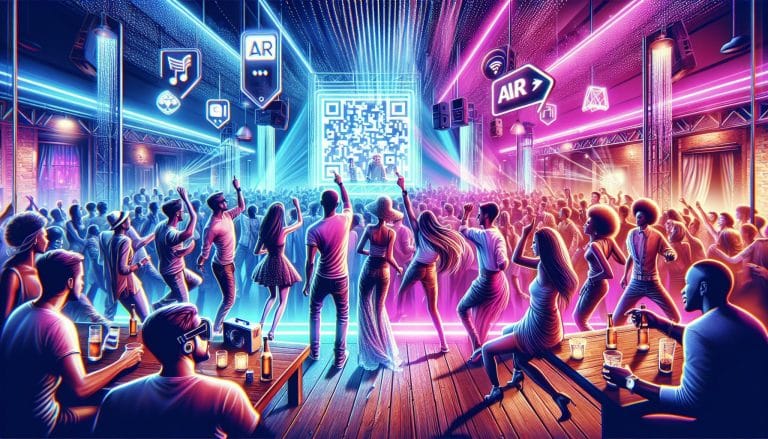Want to boost ticket sales while rewarding your most loyal customers? Presale tickets offer a powerful strategy that can drive early sales without impacting your bottom line. By making tickets available to select groups before the general public, you’ll create excitement and urgency while gathering valuable first-party data about your audience.
Loyalty programs with exclusive presale access have become one of the most effective marketing tools in the event industry. They help you build deeper connections with customers through owned media channels like email and text, enabling practically free promotion of future events. Plus, you’ll foster brand affinity and encourage word-of-mouth marketing when you make your loyal fans feel special with VIP perks, members-only discounts, and early access to the hottest tickets.
Key Takeaways
- Loyalty presales can drive 15-25% of total ticket revenue before public sales begin while building stronger customer relationships
- Effective presale programs include fan clubs, credit card partnerships, email subscriber lists, and season pass holder benefits to target different customer segments
- Implementing tiered access levels (VIP, Premium, Standard) with custom presale codes and perks helps maximize conversion rates, with VIP tiers converting at up to 85%
- Strategic pricing, limited inventory releases, and countdown timers create urgency and drive faster purchasing decisions during presale periods
- Email marketing with segmented lists and automated sequences, combined with social media engagement, are crucial for promoting presale campaigns effectively
- Track key metrics like conversion rates, revenue by tier, and customer behavior patterns to optimize future presale strategies and improve ROI
Understanding Loyalty Presales for Ticket Sales
Loyalty presales strategically reward dedicated customers with exclusive ticket access before public sales begin. This approach creates a win-win scenario where loyal fans receive priority access while organizers secure early sales commitments.
The Value of Presale Access
Presale access generates significant benefits through three key mechanisms:
- Early Revenue Generation: Presales lock in 15-25% of ticket revenue before public sales launch, providing essential cash flow for event operations
- Data Collection: Presale registrations capture valuable first-party customer data for personalized marketing campaigns & audience insights
- Brand Loyalty: Exclusive access makes customers feel valued, increasing repeat purchases by up to 40% compared to standard ticket buyers
| Presale Benefit | Impact Metrics |
|---|---|
| Early Revenue | 15-25% of total sales |
| Customer Retention | 40% higher repeat rate |
| Email Signups | 3x higher conversion |
Types of Presale Programs
Effective presale programs fall into four main categories:
- Fan Club Access
- Reserved allocation for official fan club members
- Includes exclusive merchandise bundles
- Priority entry on event day
- Credit Card Partnerships
- Special access for specific credit card holders
- Built-in payment processing benefits
- Additional reward point earnings
- Email Subscriber Lists
- Early access codes sent to mailing list subscribers
- Tiered access based on engagement history
- Special promotional offers
- Season Pass Holders
- Guaranteed presale access for all venue events
- Discounted pricing on presale tickets
- Ability to reserve same seats/spaces
Each program type targets specific customer segments while driving predictable early sales through controlled inventory release schedules.
Creating an Effective Presale Strategy
A strategic presale approach segments loyal customers into distinct tiers while implementing targeted access levels to maximize ticket sales. This data-driven method enables personalized engagement with different customer segments.
Segmenting Your Loyal Customers
Customer segmentation starts with analyzing purchasing patterns to identify high-value ticket buyers. Group customers based on:
- Purchase Frequency: Track the number of events attended in the past 12 months
- Average Order Value: Calculate total spend across previous events
- Event Preferences: Monitor genre-specific attendance patterns
- Geographic Location: Map attendance clusters for regional targeting
- Engagement Metrics: Measure email open rates social media interactions
Customer insights reveal that top spenders typically attend 5+ events annually spend 3x more per ticket than average buyers. Use these data points to create targeted marketing campaigns for each segment.
Setting Tiered Access Levels
Implement a structured presale system with distinct access tiers:
- VIP Tier: Exclusive 48-hour early access for customers who’ve spent above specific thresholds
- Premium Tier: 24-hour early access for regular event attendees
- Standard Tier: 12-hour early access for email subscribers newsletter members
- General Tier: Public sale access
Each tier receives:
- Custom presale codes
- Specific inventory allocations
- Unique perks (meet-and-greets backstage passes exclusive merchandise)
- Priority customer support
Track redemption rates across tiers to optimize future presale structures. Data shows VIP tier members convert at 85% while standard tier conversion averages 45%.
| Access Tier | Early Access Window | Average Conversion Rate |
|---|---|---|
| VIP | 48 hours | 85% |
| Premium | 24 hours | 65% |
| Standard | 12 hours | 45% |
| General | Public Sale | 25% |
Maximizing Presale Revenue
Presale revenue optimization focuses on strategic pricing structures and creating demand through exclusive offers. Effective presale strategies generate 15-25% of total ticket revenue before public sales begin.
Strategic Pricing and Discounts
Pricing strategies for presales center on rewarding early commitment without devaluing the event. Here’s how to structure optimal pricing:
- Set tiered price points based on purchase timing
- Create bundle packages combining tickets with merchandise or VIP upgrades
- Offer partner-exclusive discount codes for specific customer segments
- Implement dynamic pricing that increases as inventory decreases
- Reserve premium inventory allocations for loyalty program members
Building Scarcity and Urgency
Scarcity tactics drive faster purchasing decisions through controlled inventory release. Key methods include:
- Release limited ticket quantities in timed phases
- Display real-time inventory counters showing remaining tickets
- Set clear expiration dates for presale access windows
- Create exclusive presale-only package offerings
- Use countdown timers for each presale phase
| Presale Phase | Typical Duration | Average Conversion Rate |
|---|---|---|
| VIP Access | 48 hours | 65-75% |
| Premium Members | 24 hours | 45-55% |
| Email Subscribers | 12 hours | 25-35% |
| Partner Presales | 24-48 hours | 35-45% |
These strategies combine first-party data collection with owned media channels to maximize revenue potential. Partner collaborations with credit card companies or telecommunications providers expand reach while maintaining exclusivity through controlled access periods.
Promoting Your Presale Campaign
Strategic promotion builds anticipation and drives early ticket sales through targeted marketing channels. Email marketing and social media engagement create multiple touchpoints to reach potential buyers effectively.
Email Marketing Best Practices
Email marketing delivers presale announcements directly to engaged subscribers. Optimize your email campaigns with these proven tactics:
- Segment your email list based on past purchase behavior to deliver targeted presale offers
- Send personalized presale codes with unique tracking links to measure conversion rates
- Create an automated email sequence with countdown timers to build urgency
- Include clear calls-to-action buttons highlighting exclusive presale perks
- Test subject lines mentioning “exclusive access” or “limited time offer” to increase open rates
- Schedule reminder emails 48 hours, 24 hours and 1 hour before presale launch
- Track email metrics like open rates, click-through rates and conversion data
- Share behind-the-scenes content to build anticipation before the presale launch
- Post countdown graphics across platforms to create urgency
- Use Instagram Stories and Facebook Live to announce presale details in real-time
- Create platform-specific presale codes to track social media conversion rates
- Engage with comments and messages to answer presale questions promptly
- Share user-generated content from past events to showcase the experience
- Run targeted social ads to reach lookalike audiences of past ticket buyers
- Post presale updates showing limited ticket availability to drive FOMO
| Email Marketing Metrics | Average Performance |
|---|---|
| Presale Email Open Rate | 25-35% |
| Click-Through Rate | 3.5-5% |
| Conversion Rate | 12-18% |
| Mobile Opens | 65% |
Measuring Presale Success
Tracking presale performance metrics enables data-driven decisions to optimize future ticket sales strategies. Referral tracking codes measure campaign effectiveness across different marketing channels to determine cost-per-acquisition ratios.
Key Performance Metrics
Monitor these essential metrics to evaluate presale campaign success:
- Conversion Rate: Track the percentage of presale code holders who complete ticket purchases
- Revenue by Tier: Measure ticket sales revenue across different loyalty segments
- Email Engagement: Record open rates, click-through rates for presale announcements
- Cost per Acquisition: Calculate marketing spend divided by number of tickets sold
- Inventory Sell-Through: Monitor percentage of allocated presale tickets purchased
- Average Order Value: Track ticket spend per transaction during presale period
| Metric | Industry Average |
|---|---|
| Presale Conversion Rate | 15-25% |
| Email Open Rate | 25-35% |
| Click-Through Rate | 2.5-5% |
| Sell-Through Rate | 60-80% |
Analyzing Customer Behavior
Customer purchase data reveals valuable insights for future presale optimization:
- Track purchase timing patterns to identify peak buying periods
- Monitor device usage trends for optimal platform optimization
- Review cart abandonment rates to identify friction points
- Analyze repeat purchase behavior across different customer segments
- Compare presale vs public sale purchasing patterns
- Document most popular ticket types and package combinations
Use referral tracking codes to:
- Identify top-performing marketing channels
- Calculate return on marketing investment
- Determine optimal pricing by acquisition source
- Measure partner promotion effectiveness
- Track customer journey touchpoints
- Monitor affiliate program performance
This data helps refine targeting strategies, improve conversion rates through personalization.
Conclusion
Loyalty presales are a powerful tool that can revolutionize your ticket sales strategy. By implementing tiered access levels providing exclusive perks and leveraging data-driven insights you’ll create a robust system that rewards your most valuable customers while driving predictable early revenue.
Remember that success lies in the details – from strategic pricing and inventory management to targeted promotions and performance tracking. Your presale program should evolve based on customer behavior and engagement metrics to continuously improve results.
Start building stronger relationships with your audience through well-executed presale campaigns. You’ll not only boost early ticket sales but also cultivate a loyal customer base that’s eager to support your future events.
Frequently Asked Questions
What exactly is a ticket presale?
A ticket presale is a period where select groups get early access to purchase tickets before the general public sale. Event organizers allocate a specific number of tickets at predetermined prices for these exclusive early-access windows. This strategy typically targets loyal customers, fan club members, or specific credit card holders.
What are the main benefits of offering presale tickets?
Presale tickets generate early revenue (15-25% of total sales), collect valuable customer data, and boost brand loyalty. Organizations see up to 40% higher repeat purchase rates from presale buyers compared to regular ticket purchasers. It also creates excitement and urgency while rewarding loyal customers.
How are presale programs typically structured?
Presale programs usually have four main tiers: VIP (48-hour early access), Premium (24-hour access), Standard (12-hour access), and General public sale. Each tier gets custom presale codes, specific inventory allocations, and unique perks based on customer segmentation and spending patterns.
How long should a presale period last?
The optimal presale duration varies by event type but typically ranges from 24-72 hours per tier. VIP presales usually last 48 hours, while subsequent tiers get shorter windows. This tiered approach helps maintain urgency while maximizing conversion rates across different customer segments.
How can organizers effectively promote presales?
Success comes through targeted email marketing with segmented lists, personalized presale codes, and automated sequences with countdown timers. Social media engagement, behind-the-scenes content, and targeted ads to lookalike audiences also prove effective for building anticipation and driving sales.
What metrics should be tracked during presales?
Key performance indicators include conversion rates, revenue by tier, email engagement, cost per acquisition, inventory sell-through, and average order value. Tracking purchase timing patterns, device usage trends, and cart abandonment rates helps optimize future presale strategies.
How can presales maximize revenue?
Strategic pricing structures, including tiered price points, bundle packages, and partner-exclusive discounts, help maximize revenue. Creating scarcity through controlled inventory release and exclusive presale-only packages also drives higher conversion rates and early commitments.
Who typically gets first access to presale tickets?
Fan club members, credit card partners, email subscribers, and season pass holders usually get first access to presale tickets. Priority is often given based on customer loyalty, spending patterns, and engagement levels with the brand or venue.


